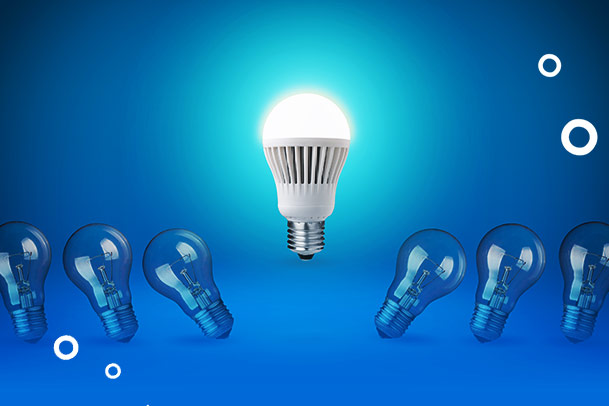LED lights are the most energy-efficient and robust lighting options available today. They are useful and reliable for many residential and industrial applications. Here are the top 11 reasons to consider switching to LED bulbs.
1.LEDs are highly energy-efficient
LEDs generate light by passing an electric current through a light-emitting diode. Since they do not produce a lot of heat, LEDs require low amounts of energy to operate. The bulb can generate 200 lumens of light for every watt of electrical power.
According to the US Department of Energy, LED lights can lower residential energy consumption by 75%. Policymakers project that LED bulbs could reduce energy usage nationally by 569 Terra-Watt hours annually.
2.LEDs have a longer lifespan
Typically, LED lighting has a longer lifespan than other light sources. Incandescent bulbs have a lifespan of 1000 hours, while fluorescents have a life of between 6,000 to 15,000 hours. In comparison, LEDs can last between 50,000 and 100,000 hours.
That means you don’t have to keep changing blown-out bulbs. Therefore, LED bulbs have fewer maintenance requirements than CFL, fluorescent, incandescent and other traditional lights.
3.LEDs are small and compact
LEDs use a light-emitting diode making it possible for manufacturers to produce small and compact LED lights. You can find lighting equipment from a heavy-duty LED supplier. Their compact size allows you to use them for a wide range of lighting applications, including residential and industrial applications.
4.LEDs are versatile
LEDs are versatile, thanks to their small size and low heat output. They are solid-state light and do not require the glass around the bulb.
These features enable easier LED retrofitting for different applications. They can serve as outdoor lighting, traffic lights and electronic systems like TVs and game consoles.
5.LEDs produce better color quality
The CRI (Color Rendering Index) describes the ability of light to render different colors when illuminated. CRI has an index range of between 0 to 100. Values below 80 are poor, while an index over 90 describes bulbs of exceptional quality.
LED lights can have a CRI index of more than 90, and some products cite values of 99 CRI. High CRI is invaluable for film and photography applications. LEDs can illuminate objects and mimic natural hues to produce high-quality images.
- Light up instantly to produce high brightness
LEDs bulbs light up instantly to produce bright and intense light. Incandescent and fluorescent lights have a warm-up period before illuminating the space. That means the bulb frequently fails because the bulb or fluorescent strains every time the light is turned on.
Since LED lights do not require warming up, you can use them for automatic or Smart lights. Frequent switching on and off hardly impacts their lifespan or performance.
- LED lights are safer
LEDs are safer since they generate virtually no ultraviolet radiation. Overexposure to UV radiation can cause skin and eye problems. According to the CDC, It can cause severe health complications, including cancer and skin complications.
Ultraviolet light can also damage the valuables in your home or office. UV may cause colors to fade, ruining your precious items. Using LED is much safer for employees and valuables.
8.LEDs are Environmentally-friendly
LED lights are made from semiconductor materials that are easy to recycle or reuse. They are much safer than fluorescent, which contains mercury, a hazardous waste in landfills. By opting for LEDs, you will be reducing your environmental impact.
- Lights have dimming capabilities
LED bulbs can dim light from 0 to 100% intensity without requiring additional components on the lighting fixture. Therefore, it is possible to adjust its brightness across multiple values to match the requirements of the space. This flexibility offers more energy savings for an already highly efficient bulb.
10.LEDs emit unidirectional light
Fluorescent and incandescent bulbs are omnidirectional. That means they emit light in all directions at 360 degrees. LEDs are unidirectional, generating light at 180 degrees from the source. Therefore, the fixture does not require additional diffusers or reflectors to project light in a specific direction.
11.LEDs are not affected by frequent switching
LEDs are also robust and are not affected by constant flipping on and off. They don’t use filaments like incandescent bulbs. They can last longer than traditional lighting in applications that require frequent switching.











